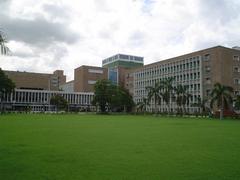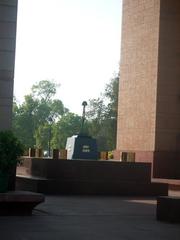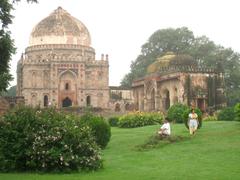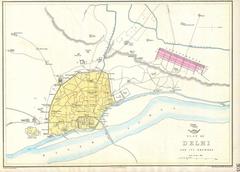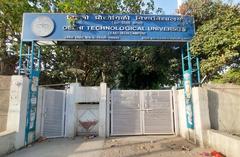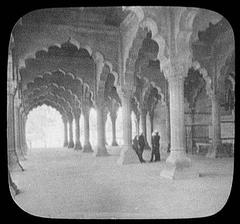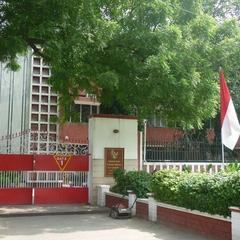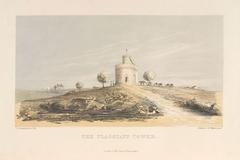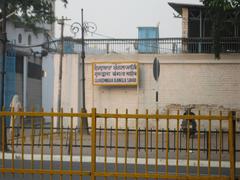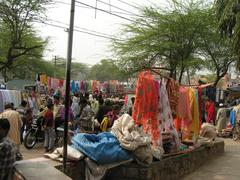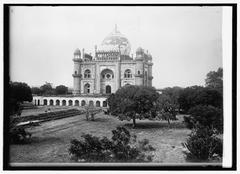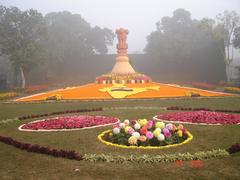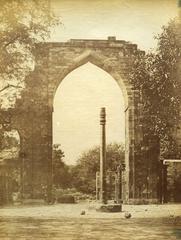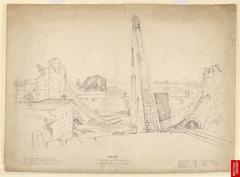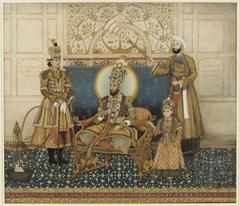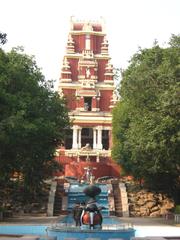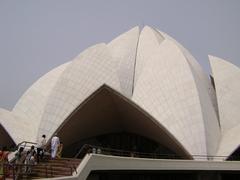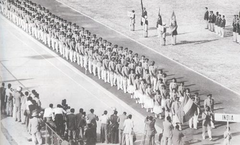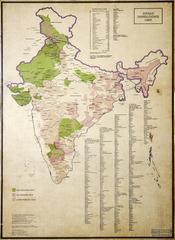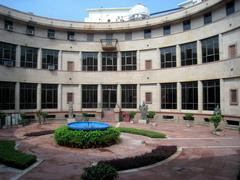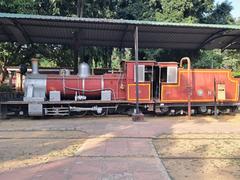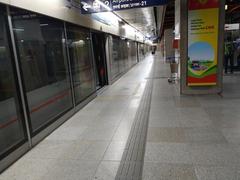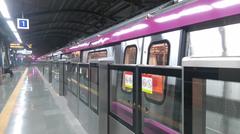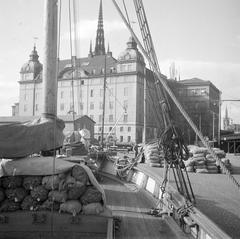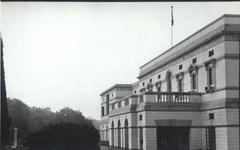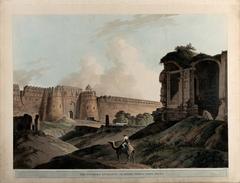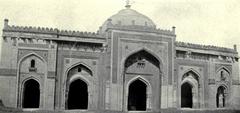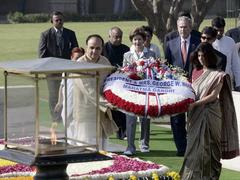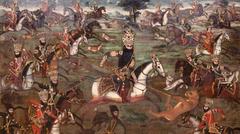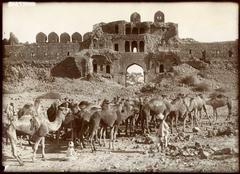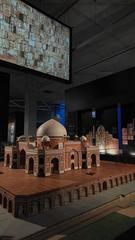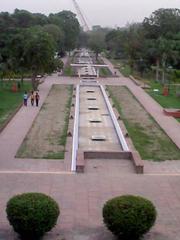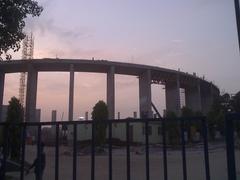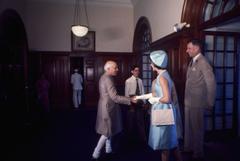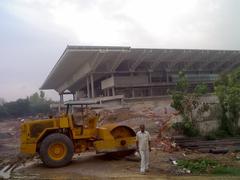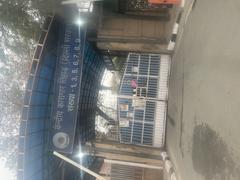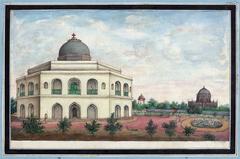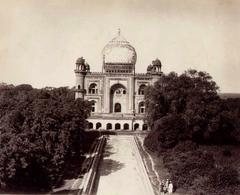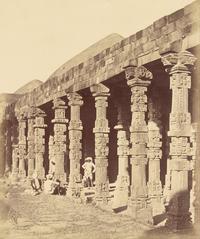Rail Bhavan New Delhi – Visiting Hours, Tickets, and Travel Guide
Date: 14/06/2025
Introduction
Rail Bhavan, situated at 1, Raisina Road in New Delhi, is the administrative headquarters of the Indian Railways and a prominent architectural landmark within the capital’s Central Vista. While it primarily functions as a secured government office rather than a tourist destination, its history and significance make it a point of interest for anyone keen on understanding the governance and heritage of modern India. This comprehensive guide explores Rail Bhavan’s origins, architectural features, administrative role, and provides up-to-date information on visiting protocols, accessibility, and nearby attractions.
Table of Contents
- Introduction
- Historical Background and Architectural Context
- Institutional Significance and Role in Indian Railways
- Visiting Rail Bhavan: Practical Information
- Nearby Attractions and Cultural Insights
- Frequently Asked Questions (FAQ)
- Conclusion
- References
Historical Background and Architectural Context
Colonial Origins and the Vision for New Delhi
The roots of Rail Bhavan are intertwined with New Delhi’s development as the British imperial capital in the early 20th century. In 1911, the seat of government shifted from Calcutta to Delhi, and architects Sir Edwin Lutyens and Sir Herbert Baker were commissioned to design a city reflecting both imperial power and order. Their plan, influenced by the City Beautiful and Beaux-Arts movements, was characterized by broad avenues, axial symmetry, and monumental government buildings (Platform Space).
The Central Vista and Government Infrastructure
At the heart of this vision lies the Central Vista—a ceremonial boulevard stretching from India Gate to Rashtrapati Bhavan (formerly the Viceroy’s House). This axis became the administrative core, flanked by North and South Block Secretariats, Parliament House, and other key ministries (Platform Space).
Post-Independence Construction and Features
After independence, the rapid expansion of government functions necessitated new administrative buildings. The Central Public Works Department (CPWD) responded by constructing structures like Rail Bhavan in the 1960s, designed to harmonize with the existing colonial architecture while addressing modern administrative needs (Platform Space).
Rail Bhavan’s six-story façade features a blend of modernist design—boxy windows and strong verticals—with traditional Indian elements such as chajjas (eaves) and domes reminiscent of Buddhist stupas. The use of red and cream sandstone echoes the neighboring Lutyens-Baker buildings, creating continuity within the Central Vista (Platform Space).
Institutional Significance and Role in Indian Railways
Administrative Command
Rail Bhavan is the nerve center of Indian Railways, housing the Ministry of Railways and the Railway Board, including the Chairman and key decision-makers (Indian Rail Fandom; DBpedia). From here, policies are formulated, budgets managed, strategic projects overseen, and responses to national challenges coordinated. Its proximity to Parliament House facilitates essential inter-ministerial coordination.
War Room Operations
Rail Bhavan is also equipped with a 24x7 War Room to monitor and manage critical events, such as the Maha Kumbh 2025, using thousands of live camera feeds for real-time oversight of train operations and passenger amenities (OneIndia). This digital infrastructure enables swift crisis response and efficient coordination with local authorities.
Political and Diplomatic Importance
Beyond administration, Rail Bhavan symbolizes national integration and economic development. Major projects, such as new railway lines in Jammu & Kashmir or high-speed train initiatives, are steered from here, reflecting its pivotal role in national policy and international cooperation (The Hindu).
Visiting Rail Bhavan: Practical Information
Visiting Hours and Entry
- General Public Access: Rail Bhavan is not open for casual visits or public tours.
- Official Appointments: Entry is permitted only for those with formal appointments, official business, or on special delegations. No tickets are issued.
- Office Hours: Typically 9:30 AM – 6:00 PM, Monday to Friday (closed on public holidays).
Security and Accessibility
- Entry Protocols: All visitors must have prior authorization, a formal invitation, and valid government-issued photo ID (passport for foreigners, Aadhaar/PAN for Indian citizens).
- Security Measures: Expect baggage checks, metal detectors, and CCTV surveillance. Photography is strictly prohibited.
- Accessibility: The building is equipped with ramps and elevators. Notify your host in advance if special assistance is required.
- Parking: Restricted to authorized vehicles. Public parking is not available; use public transport or drop-off options.
Travel Tips
- By Metro: Central Secretariat Metro Station (Yellow & Violet Lines) is closest, about a 16-minute walk away.
- By Bus: DTC and cluster buses serve the area. Bus stops are within a short walk.
- By Taxi/Auto: Taxis and auto-rickshaws can drop you at the entrance; app-based services are widely available.
- Dress Code: Business or smart casual attire is recommended.
- Punctuality: Arrive 15–30 minutes before your appointment for security clearance.
Nearby Attractions and Cultural Insights
While Rail Bhavan itself is not accessible to tourists, its central location offers convenient access to several iconic New Delhi historical sites:
- Rashtrapati Bhavan: The President’s residence with Mughal Gardens (open to the public by advance booking, usually Feb–Mar) (Delhi Tourism).
- Parliament House: Admire the exterior; Parliament Museum nearby showcases India’s legislative journey.
- India Gate: Iconic war memorial, popular for evening strolls and picnics.
- National Rail Museum: A must-visit for rail enthusiasts, featuring historic locomotives and interactive displays (National Rail Museum).
- Connaught Place: Shopping, dining, and colonial architecture.
- Jantar Mantar: 18th-century astronomical observatory.
- Gurudwara Bangla Sahib: Renowned Sikh temple with community kitchen.
- National Gallery of Modern Art: Showcases Indian art history.
- Lodhi Gardens: Tranquil green space with 15th-century tombs.
Cultural Tips:
Dress modestly, especially at religious and government sites. Respect all security protocols and photography restrictions. Consider walking between nearby attractions, but bring water and sun protection, especially in warmer months.
Frequently Asked Questions (FAQ)
Q: Can tourists visit Rail Bhavan?
A: No. Public entry is not permitted except by prior official appointment.
Q: Are guided tours available?
A: No official guided tours are offered inside Rail Bhavan, but the exterior can be viewed during heritage walks.
Q: What are the official hours?
A: 9:30 AM to 6:00 PM, Monday to Friday, for official business only.
Q: Is photography allowed?
A: Photography is strictly prohibited inside and around the building.
Q: How do I get there?
A: Use the Central Secretariat or Udyog Bhawan Metro stations. Taxis and buses are also convenient.
Conclusion
Rail Bhavan epitomizes India’s administrative evolution and the scale of its rail network, standing at the intersection of colonial heritage and contemporary governance. Although access is restricted, the building’s architectural and institutional legacy makes it a significant part of New Delhi’s Central Vista. Visitors can enrich their understanding of India’s history by exploring nearby landmarks, participating in heritage walks, or visiting the National Rail Museum.
For travel updates and curated guides on Delhi’s historical and governmental sites, download the Audiala app and follow our social media channels.
References
- Platform Space – Reimagining New Delhi’s Central Vista Part I
- Indian Rail Fandom – Rail Bhavan
- DBpedia – Rail Bhawan
- Delhi Capital – Rashtrapati Bhavan
- Travelers Guider – Rashtrapati Bhavan Visiting Info
- The Hindu – Rail Projects
- OneIndia – Maha Kumbh 2025 Rail Bhavan War Room
- Delhi Tourism – Rashtrapati Bhavan
- National Rail Museum – Official Site

